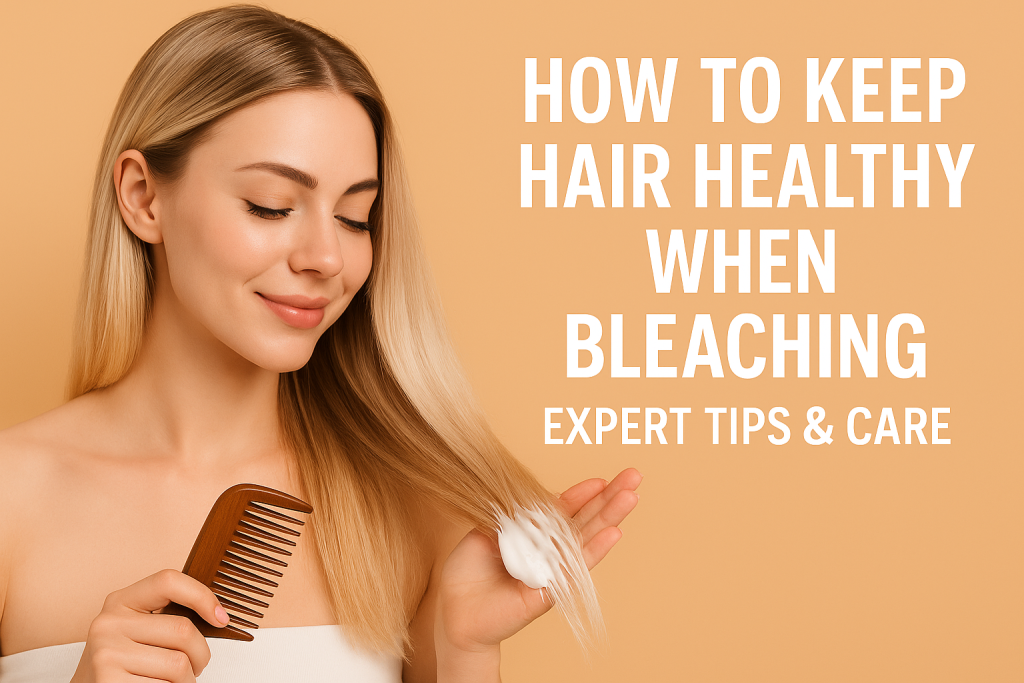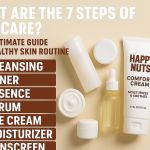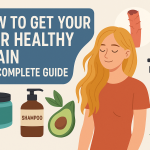Bleaching your hair can create stunning results, from platinum blondes to pastel hues, but it’s also a chemical process that can leave your hair feeling dry, brittle, and prone to breakage. The good news is: you can enjoy vibrant, bleached hair while maintaining health and shine. Here’s your comprehensive guide on how to keep hair healthy when bleaching—before, during, and after lightening.
Understanding the Impact of Bleaching on Hair
Bleaching uses potent chemicals, typically hydrogen peroxide and ammonia, to strip pigment from your hair. This process opens up the hair cuticle, allowing the bleach to penetrate and dissolve the natural color. While effective for color transformation, this can compromise hair’s structure, leading to dryness, elasticity loss, and breakage.
- Cuticle Damage: The protective outer layer is lifted, exposing the hair shaft.
- Protein Loss: Bleach degrades keratin, the main protein that gives hair strength.
- Moisture Depletion: Bleached hair loses natural oils, resulting in dryness.
With the right care, it’s possible to minimize these effects.
Pre-Bleaching Preparation: Setting Up for Success
1. Assess Your Hair’s Health
Healthy hair handles bleaching better. If your hair is already damaged or over-processed, wait until it’s in better condition. Look for signs like split ends, excessive shedding, and lack of elasticity.
2. Deep Condition Regularly
In the weeks leading up to bleaching, focus on strengthening treatments:
- Use deep conditioning masks rich in proteins and natural oils.
- Try a bond-building treatment (like Olaplex) once a week to reinforce hair structure.
- Avoid heat styling and harsh brushing to limit pre-bleach stress.
3. Avoid Washing Hair Right Before Bleaching
Your scalp’s natural oils offer protection during bleaching. Try not to wash your hair for 24–48 hours before your appointment.
4. Trim Split Ends
Removing already-damaged ends prevents further splitting and keeps your hair looking healthier post-bleach.
5. Consult with a Professional
DIY bleaching is risky, especially for dark or previously colored hair. A professional colorist can assess your hair and use gentler techniques, like adding bond protectors to the bleach mixture.
During the Bleaching Process: Take Protective Steps
1. Use Bond Protectors
Modern salons often mix bond-building additives (such as Olaplex, K18, or Smartbond) with bleach. These products help protect and repair hair bonds during processing.
2. Don’t Overprocess
Bleach should never be left on longer than necessary. Overprocessing increases the risk of breakage. Always do a strand test and follow timing instructions strictly.
3. Watch the Scalp
If you feel intense burning or discomfort, rinse immediately. A healthy scalp is crucial for healthy hair growth.
Aftercare: How to Keep Hair Healthy Post-Bleach
1. Hydrating Shampoos and Conditioners
Use sulfate-free, moisture-boosting shampoos and conditioners designed for color-treated hair. These help replenish hydration and prevent fading.
2. Deep Conditioning Masks
Once or twice weekly, treat your hair to a rich, restorative mask. Look for products containing:
- Keratin and proteins: Reinforce hair structure.
- Natural oils (argan, coconut, jojoba): Add moisture and shine.
- Shea butter and aloe vera: Soothe and condition the scalp and strands.
3. Leave-In Conditioners and Serums
Lightweight leave-in products help detangle, reduce frizz, and offer a protective barrier against environmental stressors.
4. Limit Heat Styling
Heat can worsen bleach damage. Let your hair air dry whenever possible. If you must use hot tools, always apply a heat protectant spray first, and use the lowest effective temperature.
5. Gentle Handling
- Use a wide-tooth comb on wet hair to avoid breakage.
- Blot, don’t rub, hair dry with a soft towel or a t-shirt.
- Sleep on a silk or satin pillowcase to reduce friction and split ends.
6. Protect from the Elements
Sun, chlorine, and salt water can dry and fade bleached hair. Wear a hat or use a UV-protection spray when outdoors. Rinse hair before and after swimming, and consider a swim cap for pool sessions.
7. Regular Maintenance and Trims
Get trims every 6–8 weeks to keep ends healthy and prevent splits from traveling up the hair shaft.
Best Products for Healthy Bleached Hair
Investing in quality hair care products makes a dramatic difference in the health of your bleached hair. Look for:
- Bond builders (Olaplex No. 3, K18 Leave-In Molecular Repair)
- Moisturizing masks (Briogeo Don’t Despair, Repair!, Moroccanoil Intense Hydrating Mask)
- Purple shampoos for toning and maintaining cool shades
- Heat protectants (Living Proof Restore Perfecting Spray, ghd Heat Protect Spray)
Healthy Habits for Long-Term Beautiful Bleached Hair
- Avoid over-bleaching: Give your hair time to recover between coloring sessions.
- Eat a nutritious diet: Protein, vitamins (especially biotin, Vitamin E, and iron), and plenty of water support hair health.
- Be gentle: Bleached hair is more fragile—handle with care to prevent unnecessary breakage.
When to Seek Professional Help
If your hair feels gummy, excessively stretchy, or breaks off in clumps, it’s a sign of severe damage. Schedule a consultation with a trusted colorist or trichologist for specialized treatments, and consider a significant trim to remove the most compromised areas.
Conclusion: Embrace Your Color—Healthily!
Bleaching doesn’t have to mean sacrificing hair health. By prepping hair before bleaching, using modern protective products, and practicing vigilant aftercare, you can enjoy bright, beautiful results while keeping your locks soft, shiny, and resilient. Remember, the best color is healthy hair—so pamper those tresses and let your radiant color shine!


